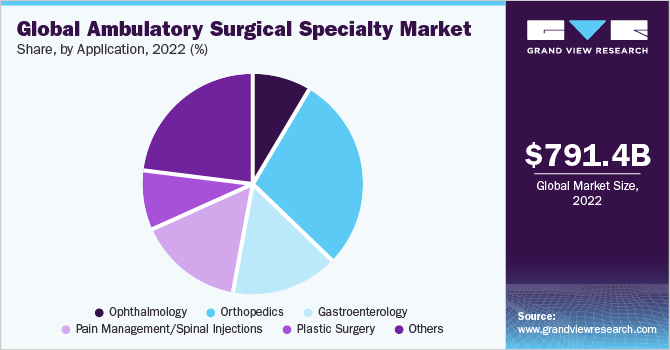Ambulatory Services Market Growth Drivers in Surgery Demand
The ambulatory services market is experiencing steady growth, supported by rising demand for outpatient procedures and cost-effective care alternatives.
The global ambulatory services market size was valued at USD 791.4 billion in 2022 and is expected to reach USD 1.2 trillion by 2030, growing at a CAGR of 5.29% from 2023 to 2030. Market growth is largely driven by the rising prevalence of chronic diseases requiring surgical interventions, the increasing demand for minimally invasive procedures, and ongoing technological advancements.
The growing preference for ambulatory care, due to its cost-effectiveness and reduced need for hospitalization, remains a key factor fueling market expansion. The rising burden of chronic conditions continues to play a major role. According to the WHO, approximately 41 million people die annually from noncommunicable diseases (NCDs), representing 74% of total global deaths. Among these, cardiovascular diseases account for 17.9 million deaths, followed by cancer with 9.3 million, chronic respiratory diseases with 4.1 million, and diabetes (including diabetes-related kidney disease) with 2.0 million fatalities each year.

In addition, government initiatives and new service offerings are further boosting market growth. For example, in 2020, the Centers for Medicare & Medicaid Services (CMS) added 11 new procedures, including hip replacement surgeries, to the list of services covered at ambulatory surgical centers (ASCs). Furthermore, 267 musculoskeletal-related procedures are now eligible for Medicare coverage when performed in ASCs. These updates are expected to improve affordability for patients while encouraging the adoption of safer, less invasive technologies.
Key Market Highlights:
- North America held the largest share of around 38.78% in 2022.
- Asia Pacific is projected to record the fastest growth in the forecast period.
- By type, the primary care offices segment accounted for the largest share of 48.6% of overall revenue in 2022.
Download a free sample PDF of the Ambulatory Services Market Intelligence Study from Grand View Research.
Market Performance:
- 2022 Market Size: USD 791.4 Billion
- 2030 Projected Market Size: USD 1.2 Trillion
- CAGR (2023–2030): 5.29%
- North America: Largest market in 2022
- Asia Pacific: Fastest growing market
Prominent Companies & Market Dynamics:
The market is highly competitive, with several providers of ambulatory services adopting strategies such as new service launches, partnerships, collaborations, and geographic expansion to strengthen their market presence.
- In January 2023, McLeod Health partnered with Wesmark Ambulatory Surgery Center to expand hospital system reach and provide multi-specialty ambulatory services to the Sumter community.
- In November 2021, Tenet Healthcare Corporation’s subsidiary, United Surgical Partners International (USPI), acquired SurgCenter Development (SCD), including its 92 ambulatory surgical centers (ASCs) and related support services.
Key Companies:
- Envision Healthcare Corporation
- Surgery Partners
- NueHealth (Nueterra Healthcare)
- Terveystalo Healthcare
- Hospital Corporation of America (HCA) Management Services, L.P
- Aspen Healthcare
- Healthway Medical Group
- Medical Facilities Corporation
- AQuity Solutions
Explore Horizon Databook – the world’s most comprehensive market intelligence platform by Grand View Research.
Conclusion
The ambulatory services market is experiencing steady growth, supported by rising demand for outpatient procedures and cost-effective care alternatives. Increasing prevalence of chronic diseases, combined with advancements in minimally invasive techniques, is driving adoption across regions. Government support and favorable reimbursement policies are further enhancing accessibility. With Asia Pacific emerging as a high-growth region, providers are focusing on expansion strategies and partnerships to strengthen their global footprint. The market is set to evolve with innovations that prioritize patient safety, efficiency, and affordability.